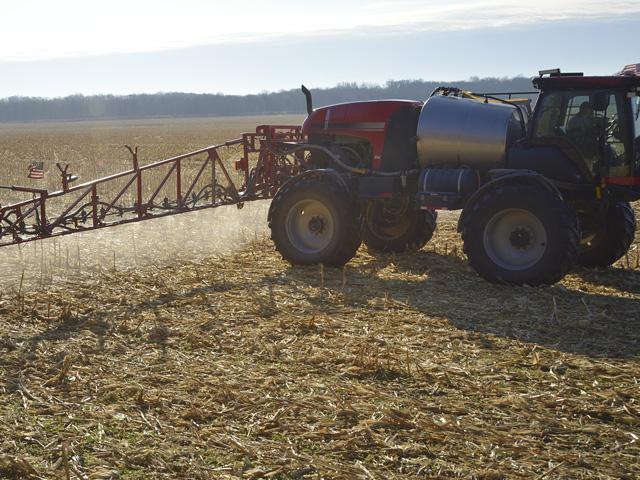Tips for Working Dry Dirt
Five Things to Remember When Dealing With Dry Soils This Fall
JEFFERSON CITY, Mo. (DTN) -- While many row-crop producers are already putting the 2022 growing season in the rear-view mirror, the effects of this year's dry and droughty conditions continue into the fall and can influence decisions for the 2023 crop.
Dry soils present many challenges, from fertilization and tillage to pests and weed control. Here's a quick rundown of five things farmers should remember when dealing with dry soils:
1. SOIL TESTS CAN BE FAULTY
The cycling of nutrients from the soil to crop and back again can be interrupted when there isn't enough moisture, especially when the dry conditions occur late in the season and continue through harvest. Soil test results for phosphorus (P), potassium (K) and pH can read lower than they actually are, leading a producer to potentially apply a higher rate of P&K than is needed or lime a field to correct a pH value that isn't in need of correcting.
Read more about this situation here: https://www.dtnpf.com/…
2. ANHYDROUS APPLICATION NEEDS MOISTURE
The window for applying anhydrous ammonia in the fall opens when the average daily soil temperature cools to 50 degrees, but growers also need to keep soil moisture in mind.
P[L1] D[0x0] M[300x250] OOP[F] ADUNIT[] T[]
According to Meaghan Anderson, Iowa State University Extension field agronomist, dry soils can be a concern due to the potential for loss at the time of application. She recommended knifing the ammonia in deeper -- 8 inches deep rather than 6 inches -- to find the moisture necessary to temporarily hold the ammonia. Equipment should be adjusted to ensure that the injection track is sealed well.
If no moisture is present and soils are cloddy, waiting for rainfall to replenish the topsoil is the best option for protecting an anhydrous investment.
Read more about anhydrous ammonia application and dry soils here: https://crops.extension.iastate.edu/…
3. TILLAGE CAN BE TRYING
While dry conditions are usually preferred for tilling, excessive dryness in the top 12 inches of soil, where most tillage occurs, can present its own challenges. Large clods can be produced that may be difficult to break with secondary tillage in the spring and may require multiple passes.
Pulling tillage equipment through soil that's more like concrete also uses extra fuel and takes longer, and crop residue isn't incorporated as effectively. The best option is to limit soil disturbance and leave residue on the surface where it can trap moisture to recharge the soil profile for the next season. Read more about tillage considerations here: https://crops.extension.iastate.edu/…
4. NEMATODE NUMBERS CAN INCREASE
A lack of moisture doesn't hurt populations of soybean cyst nematode (SCN). In fact, the microscopic roundworms love it hot and dry. Droughty conditions speed up the SCN life cycle, allowing the nematodes to reproduce quicker and create more generations in a single growing season. Read more about this at: https://www.dtnpf.com/…
Ultimately, this leads to higher SCN egg counts, which can be observed during fall soil sampling. The SCN Coalition encourages growers to sample for the pathogen's presence this month, which the organization has designated as "SCN Action Month." Until Oct. 31, producers can receive a free test kit online at: https://mmipromo.com/….
5. HERBICIDES NEED MOISTURE, TOO
Producers whose weed-management program includes fall-applied herbicides for burndown and control of winter annuals may find that continued dry conditions will make their efforts less effective.
To gain effective weed control, soil-applied herbicides require rainfall. The amount of rain needed varies by chemistry and soil moisture. Excessively dry soils may need more rain for some products to activate and mobilize into the seed germination zone.
Dwight Lingenfelter, an extension weed scientist at Penn State University, wrote that as a rule of thumb, a half-inch of rain is considered the minimum, with three-quarters to one inch of rain being ideal. Read more about drought impacts on soil-applied herbicides here: https://extension.psu.edu/….
Jason Jenkins can be reached at jason.jenkins@dtn.com
Follow him on Twitter @JasonJenkinsDTN
(c) Copyright 2022 DTN, LLC. All rights reserved.






